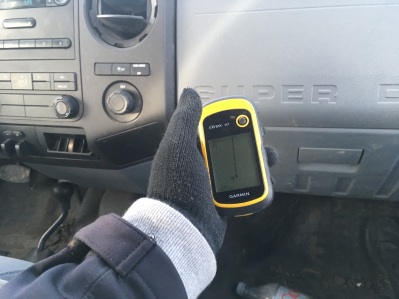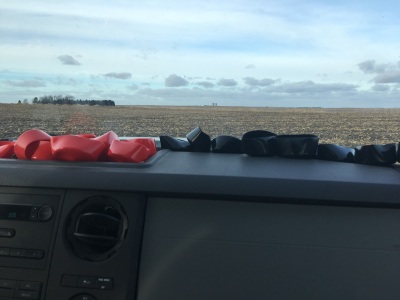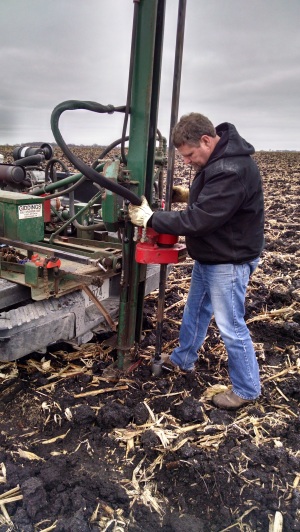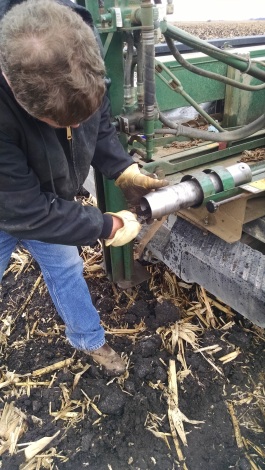Friday, December 9th marked the end of the Iowa Learning Farms 2016 field work season. Throughout the year we have collected water samples, cover crop biomass samples, spring nitrate soil samples, and seeded our cover crop plots. Following harvest, with help from Carl Pederson and a Giddings Rig, we collected bulk density soil samples for our Conservation Learning Labs project.
Bulk density is the weight of soil in a given volume and can be used to evaluate the level of soil compaction. Bulk density values increase with compaction and tend to increase with depth. Soils with high bulk density restrict root growth and can results in lower crop yields. Our samples will also be analyzed for nutrient contents in our soil processing lab.
The samples were collected prior to adding a cover crop and reducing tillage to gather baseline measurements within our two watersheds. The sample cores are three inches in diameter by twelve inches in length and due to their size, we enlisted the Giddings Rig probe.
Check out the photos series below for a glimpse into the sampling process! 
For each field, we collected three samples per soil type that made up 10% or more of the field. This ranged from 6-15 samples per field. Before heading to the field, each sampling site was randomly selected within the soil type and GPS points assigned. The points were uploaded to our handheld GPS unit for easy site locating in the field.  With temperatures in the low 20’s and 30’s, we used the truck dashboard to keep the plastic caps flexible. To help remember which way is up, the red caps (aka the sun) = top and black caps (aka the earth) = bottom. A simple, but necessary step for processing back in the lab!
With temperatures in the low 20’s and 30’s, we used the truck dashboard to keep the plastic caps flexible. To help remember which way is up, the red caps (aka the sun) = top and black caps (aka the earth) = bottom. A simple, but necessary step for processing back in the lab! 
When we reached the GPS point, we loaded up a plastic core and aligned the rig in place. The hydraulic system slowly pushed into the soil to minimize collection compaction. With the frost setting in, there were times the rig really had to work to get the full sample.
Once the sample is out of the ground, the plastic tube was removed and caps placed on the ends to keep the soil secured. The samples were labeled and placed in a 5-gallon bucket for storage and transport. The sampler is cleaned using a wire brush and putty knife to prepare it for the next location. We then hopped back in the truck and travel to the next point in the GPS.
The sampler is cleaned using a wire brush and putty knife to prepare it for the next location. We then hopped back in the truck and travel to the next point in the GPS.
In three days, we collected 108 samples from 12 fields in Floyd and Story County. Traveling across the tilled fields provided a bumpy ride for us and the rig. We managed to shear a bolt at the end of day two, but Carl was able to get it fixed in record time and we were back at it again!
Despite the cold weather, I enjoyed collecting the samples. I have collected a lot of different samples during my time as an undergraduate intern and staff at the Iowa Learning Farms, but this was my first time collecting bulk density samples with the Giddings Rig. I look forward to keeping you updated on the processing and measurement process as I keep learning.


